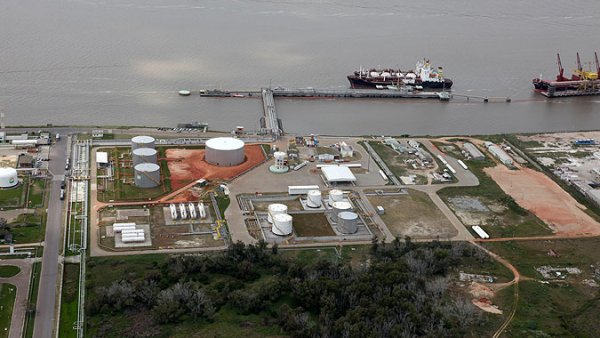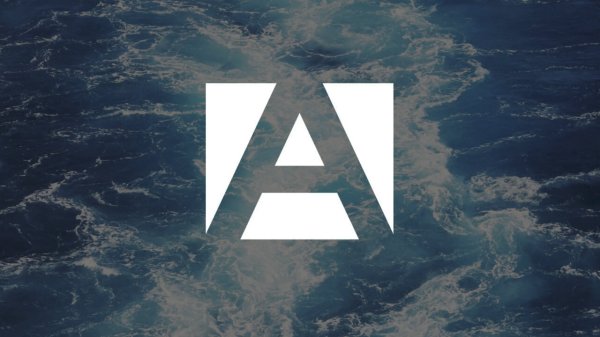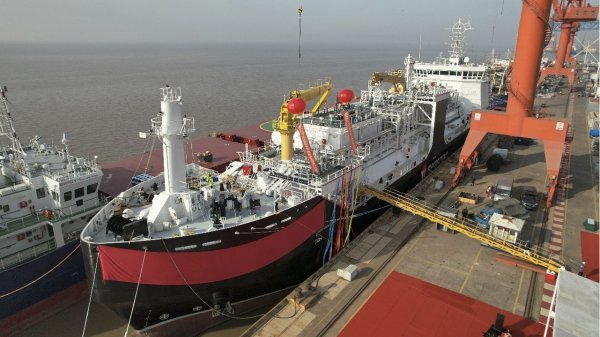New York approves clean vessel initiative
$4.9 million program aims to encourage operators to use cleaner fuels and upgrade their technology to reduce emissions.
An environmentally-friendly incentive program has been approved for ocean vessels that call at the Port of New York and New Jersey.
The three year, $4.875 million Ocean-Going Vessel Clean-Vessel Incentive (CVI) program aims to encourage ship operators to improve their engines, use cleaner fuels, and upgrade their technology to reduce emissions from ocean-going vessels.
The port authority anticipates approximately 600 vessels a year will participate in the CVI program, which will provide annual emission reductions of 182.2 tonnes of nitrogen oxide, 38.3 tonnes of particulate matter, and 264.1 tonnes of sulphur dioxides.
It is latest initiative undertaken by the port's board of commissioners as part of its comprehensive strategy to make operations cleaner and more environmentally friendly. That strategy includes environmental programs already underway at other port authority port and aviation facilities as well as at the World Trade Center site.
“Dramatically reducing air pollution, while keeping the port economically competitive, is a win for the port community and those who live in the region,” said Port Authority Chairman David Samson. "This initiative furthers our longstanding commitment to be a responsible steward of the environment in the Port District, and is yet another example of how we are working with the private sector to improve the air quality at our port facilities."
“Today’s action will result in significant air pollution reductions at our ports by providing incentives for vessel owners to invest in newer, cleaner technology,” said Port Authority Vice Chairman Scott Rechler. “The Port Authority is committed to remaining a leader in green port initiatives.”
“The Clean Vessel Incentive program will result in cleaner air, which in turn means better health for the people who live and work in the Port District,” said Port Authority Executive Director Pat Foye.
“This program means that more of the ships that call on our port will be cleaner ships, burning cleaner fuel,” said Port Authority Deputy Executive Director Bill Baroni. “That means fewer emissions and greener port operations.”
As part of the Port Authority’s Clean Air Strategy, the CVI provides financial incentives to ships achieving a score of 20 points or higher based on the World Port Climate Initiative’s Environmental Ship Index (ESI). The ESI is a worldwide mechanism that awards points to vessels that exceed the environmental standards set by the International Maritime Organization. Additional points are allocated to vessels that participate in the speed-reduction program, which would reduce speed to no more than 10 knots starting 20 nautical miles from the entrance to the New York New Jersey harbor.
Currently, 14 European ports have an ESI incentive program; the Port Authority of New York and New Jersey would be the second U.S. port, after the port of Los Angeles, to adopt an ESI incentive program.
The Clean Vessel Program is one of many initiatives designed to protect the environment in and around Port Authority facilities.
At the maritime port, the board approved approximately $30 million in funding over a six-year period (2009-2015) to fund environmental initiatives to improve air quality. As of the first quarter of 2012, these actions are said to have resulted in emissions reductions of over 500 tonnes of nitrogen oxide and 26 tonens of particulate matter.
The board previously authorized $34 million to assist the owners of trucks with 2003 or older engines that serve port authority marine terminals to purchase newer, more environmentally friendly vehicles. This past spring, the Truck Replacement Program won the Northeast Diesel Collaborative’s (NEDC) Breathe Easy Award. The Northeast Diesel Collaborative is a partnership among the U.S. Environmental Protection Agency, state agencies, and private and nonprofit groups. The Breathe Easy award recognizes the outstanding efforts of individuals or organizations who actively promote NEDC's goal to reduce diesel emissions, and have made significant contributions to improving air quality and public health.
In addition, the board in 2011 approved a $6 million Low-Sulfur Fuel Program to provide incentives to operators of ocean vessels for up to 50 percent of the cost differential between conventional high-sulphur bunker fuel and low sulphur fuel.
Just last month, the board took action to move forward with another Clean Air Strategy initiative, the installation of shore power technology at the Brooklyn Cruise Terminal. The project will allow cruise ships serving the Brooklyn Cruise Terminal to plug in to a more environmentally friendly electrical landside power source. The expected environmental benefits of the Shore Power Project include annual reductions of 1,400 tonnes of greenhouse gasses, 90 tonnes of nitrogen oxide, 93 tonnes of sulfur dioxide and 6 tonnes of particulate matter.
The three year, $4.875 million Ocean-Going Vessel Clean-Vessel Incentive (CVI) program aims to encourage ship operators to improve their engines, use cleaner fuels, and upgrade their technology to reduce emissions from ocean-going vessels.
The port authority anticipates approximately 600 vessels a year will participate in the CVI program, which will provide annual emission reductions of 182.2 tonnes of nitrogen oxide, 38.3 tonnes of particulate matter, and 264.1 tonnes of sulphur dioxides.
It is latest initiative undertaken by the port's board of commissioners as part of its comprehensive strategy to make operations cleaner and more environmentally friendly. That strategy includes environmental programs already underway at other port authority port and aviation facilities as well as at the World Trade Center site.
“Dramatically reducing air pollution, while keeping the port economically competitive, is a win for the port community and those who live in the region,” said Port Authority Chairman David Samson. "This initiative furthers our longstanding commitment to be a responsible steward of the environment in the Port District, and is yet another example of how we are working with the private sector to improve the air quality at our port facilities."
“Today’s action will result in significant air pollution reductions at our ports by providing incentives for vessel owners to invest in newer, cleaner technology,” said Port Authority Vice Chairman Scott Rechler. “The Port Authority is committed to remaining a leader in green port initiatives.”
“The Clean Vessel Incentive program will result in cleaner air, which in turn means better health for the people who live and work in the Port District,” said Port Authority Executive Director Pat Foye.
“This program means that more of the ships that call on our port will be cleaner ships, burning cleaner fuel,” said Port Authority Deputy Executive Director Bill Baroni. “That means fewer emissions and greener port operations.”
As part of the Port Authority’s Clean Air Strategy, the CVI provides financial incentives to ships achieving a score of 20 points or higher based on the World Port Climate Initiative’s Environmental Ship Index (ESI). The ESI is a worldwide mechanism that awards points to vessels that exceed the environmental standards set by the International Maritime Organization. Additional points are allocated to vessels that participate in the speed-reduction program, which would reduce speed to no more than 10 knots starting 20 nautical miles from the entrance to the New York New Jersey harbor.
Currently, 14 European ports have an ESI incentive program; the Port Authority of New York and New Jersey would be the second U.S. port, after the port of Los Angeles, to adopt an ESI incentive program.
The Clean Vessel Program is one of many initiatives designed to protect the environment in and around Port Authority facilities.
At the maritime port, the board approved approximately $30 million in funding over a six-year period (2009-2015) to fund environmental initiatives to improve air quality. As of the first quarter of 2012, these actions are said to have resulted in emissions reductions of over 500 tonnes of nitrogen oxide and 26 tonens of particulate matter.
The board previously authorized $34 million to assist the owners of trucks with 2003 or older engines that serve port authority marine terminals to purchase newer, more environmentally friendly vehicles. This past spring, the Truck Replacement Program won the Northeast Diesel Collaborative’s (NEDC) Breathe Easy Award. The Northeast Diesel Collaborative is a partnership among the U.S. Environmental Protection Agency, state agencies, and private and nonprofit groups. The Breathe Easy award recognizes the outstanding efforts of individuals or organizations who actively promote NEDC's goal to reduce diesel emissions, and have made significant contributions to improving air quality and public health.
In addition, the board in 2011 approved a $6 million Low-Sulfur Fuel Program to provide incentives to operators of ocean vessels for up to 50 percent of the cost differential between conventional high-sulphur bunker fuel and low sulphur fuel.
Just last month, the board took action to move forward with another Clean Air Strategy initiative, the installation of shore power technology at the Brooklyn Cruise Terminal. The project will allow cruise ships serving the Brooklyn Cruise Terminal to plug in to a more environmentally friendly electrical landside power source. The expected environmental benefits of the Shore Power Project include annual reductions of 1,400 tonnes of greenhouse gasses, 90 tonnes of nitrogen oxide, 93 tonnes of sulfur dioxide and 6 tonnes of particulate matter.

|
IMO approves pricing mechanism based on GHG intensity thresholds
Charges to be levied on ships that do not meet yearly GHG fuel intensity reduction targets. |
|
|
|
||

|
VARO Energy expands renewable portfolio with Preem acquisition
All-cash transaction expected to complete in the latter half of 2025. |
|
|
|
||

|
NYK trials biofuel in milestone coal carrier test
Vessel is used to test biofuel for domestic utility company. |
|
|
|
||

|
H-Line Shipping orders LNG bunkering vessel
Vessel with 18,000-cbm capacity to run on both LNG and MDO. |
|
|
|
||

|
How to engineer and manage green shipping fuels | Stanley George, VPS
Effective management strategies and insights for evolving fuel use. |
|
|
|
||

|
Swedish government bans scrubber wastewater discharges
Discharges from open-loop scrubbers to be prohibited in Swedish waters from July 2025. |
|
|
|
||

|
MAN Energy Solutions achieves 100% load milestone for ammonia engine
Latest tests validate fuel injection system throughout the entire load curve. |
|
|
|
||

|
Petrobras secures ISCC EU RED certification for B24 biofuel blend at Rio Grande
Blend consisting of 24% FAME is said to have been rigorously tested to meet international standards. |
|
|
|
||

|
Stolt-Nielsen to fully control Avenir LNG with acquisition
Share purchase agreement to buy all shares from Golar LNG and Aequitas. |
|
|
|
||

|
Bureau Veritas supports launch of CIMC SOE's LNG bunkering vessel
Handover of Seaspan Energy's cutting-edge 7,600-cbm vessel completed. |
|
|
|
||
Related Links
- · Cargo volume record for New York & New Jersey [Insights]
- · APL switches to low sulphur fuels in New York [Insights]
- · NY/NJ terminals to close on Oct 12th [Insights]
- · NY low sulphur initiative gets green light [Insights]
- · United States [Directory]
- · New York [Directory]

